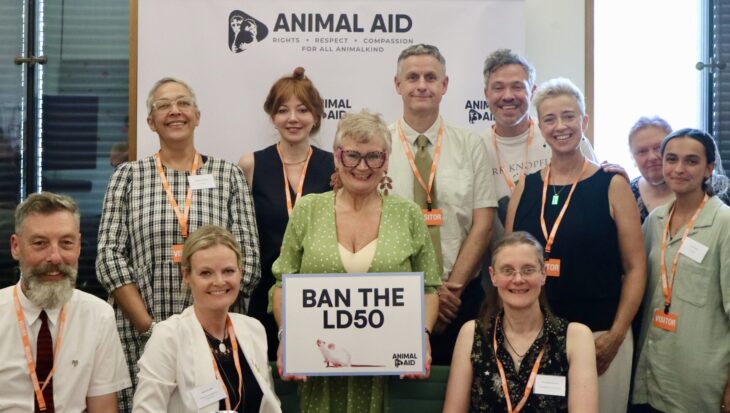Animal Aid in parliament to discuss ending animal tests
Yesterday, Animal Aid hosted a roundtable in Westminster, to meet with MPs and other invited guests to discuss the ending the LD50 and other animal tests.
Posted 02 Jul 2025

Posted on the 12th June 2015
A Freedom of Information request reported by the Daily Mirror has revealed that thousands of people have become seriously ill after taking part in clinical trials of new drugs, with many suffering life-threatening symptoms. Before they were given to people in clinical trials, all these new drugs would have been passed as safe in animal tests. But these animal tests are often highly misleading, and studies have suggested that they are no more reliable than tossing a coin.
The new figures reveal that over the past five years, 7,187 people have suffered serious and unexpected adverse reactions to drugs after taking part in clinical trials. 493 of these reactions were described as ‘immediately life threatening’ while 197 led to ‘significant incapacity or disability’. The article in the Mirroralso mentions the nightmarish effects suffered almost a decade ago by a group of previously healthy volunteers who took part in a trial of the drug TGN1412. The volunteers suffered multiple organ failure, even though the drug had been given repeatedly to monkeys at doses 500 times higher than those that were given to the trial participants. The drug had also passed safety tests on rats, mice and rabbits.
The pro-vivisection lobby will no doubt claim that these new figures, and cases like the TGN1412 disaster, are rare occurrences, and emphasise occasions when the results of animal tests and human trials have been the same. There are of course times when people have, by chance, happened to react to a new drug in the same way as the animals it was tested on, but this does not mean that animal experiments are a reliable safety-testing method. In fact, nine out of ten drugs that pass animal tests go on to fail in clinical trials.
The Mirror’s new figures highlight the urgent need to move away from crude and unreliable animal tests, and focus instead on non-animal, human-relevant methods such as computer modelling and DNA chips. These have a far greater capacity to detect potentially life-threatening effects before drugs are given to humans for the first time.
Yesterday, Animal Aid hosted a roundtable in Westminster, to meet with MPs and other invited guests to discuss the ending the LD50 and other animal tests.
Posted 02 Jul 2025

Have you heard? A breathtaking arts initiative, ‘The Herds’ will be arriving in London this Friday.
Posted 27 Jun 2025
